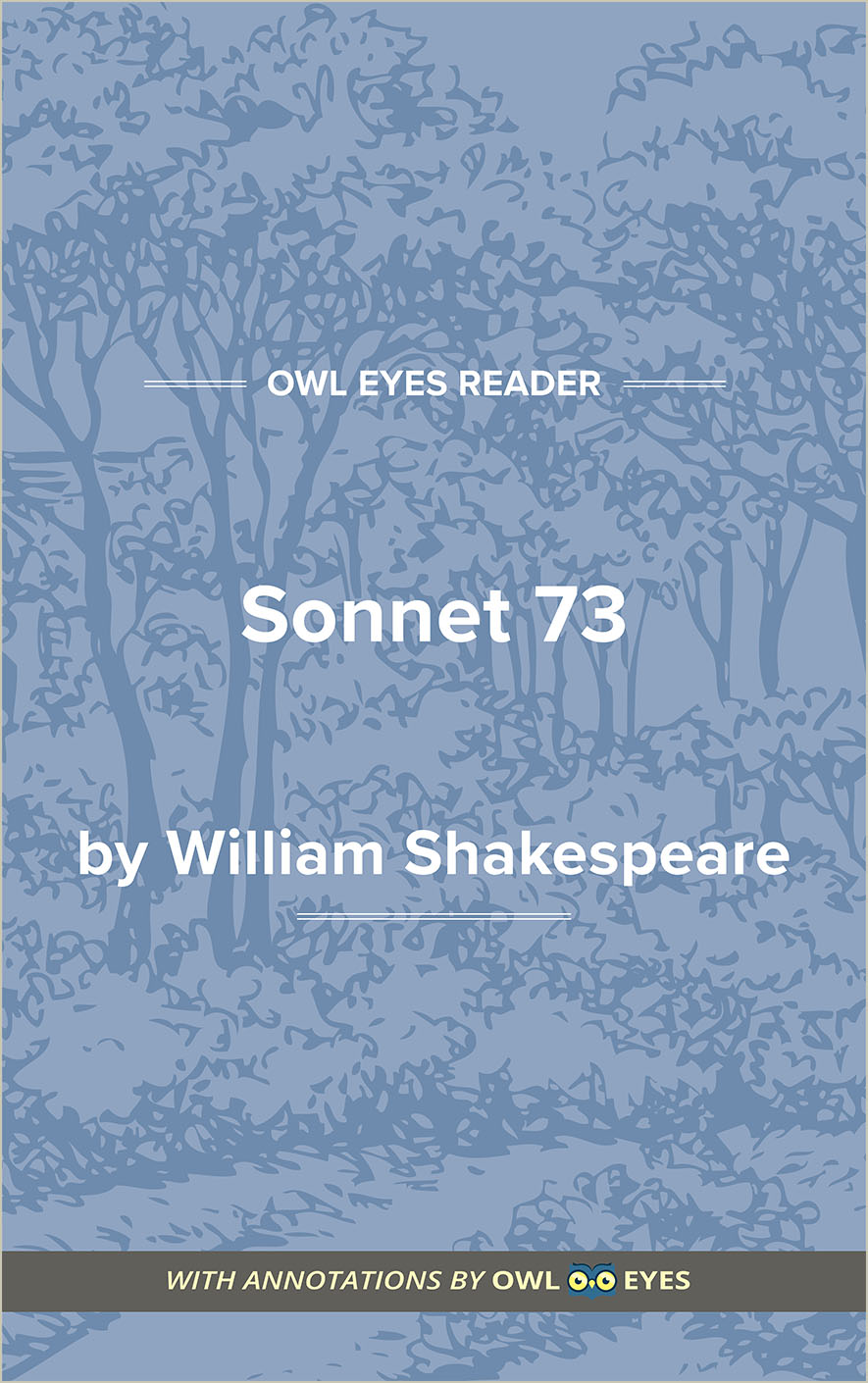Analysis Pages
Metaphor in Sonnet 73
Metaphor Examples in Sonnet 73:
Sonnet 73
🔒"Death's second self..." See in text (Sonnet 73)
"that..." See in text (Sonnet 73)
"such fire..." See in text (Sonnet 73)
"seals up..." See in text (Sonnet 73)
"Death's second self..." See in text (Sonnet 73)
"in me behold..." See in text (Sonnet 73)

